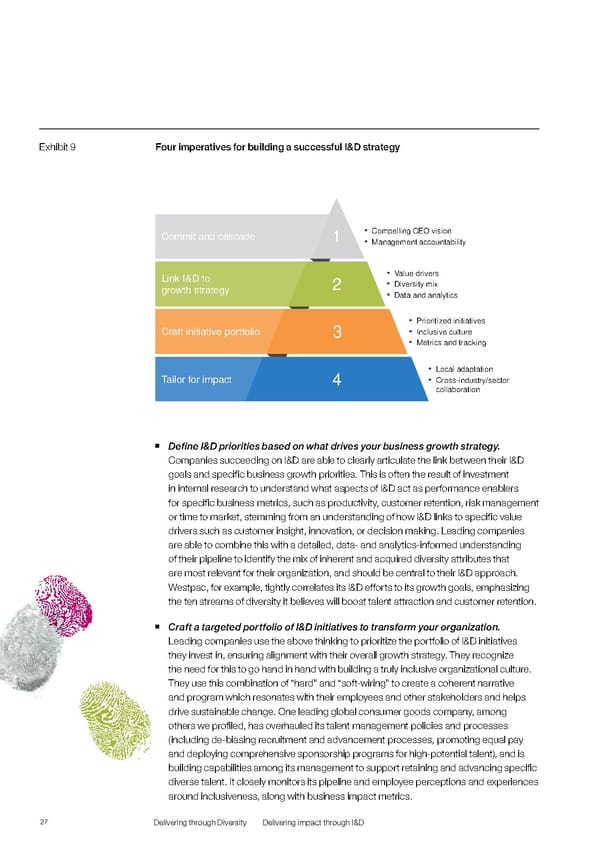Exhibit 9 Four imperatives for building a successful I&D strategy Commit and cascade 1 • Compelling CEO vision • Management accountability Link I&D to • Value drivers growth strategy 2 • Diversity mix • Data and analytics • Prioritized initiatives Craft initiative portfolio 3 • Inclusive culture • Metrics and tracking • Local adaptation Tailor for impact 4 • Cross-industry/sector collaboration ƒ Define I&D priorities based on what drives your business growth strategy. Companies succeeding on I&D are able to clearly articulate the link between their I&D goals and specific business growth priorities. This is often the result of investment in internal research to understand what aspects of I&D act as performance enablers for specific business metrics, such as productivity, customer retention, risk management or time to market, stemming from an understanding of how I&D links to specific value drivers such as customer insight, innovation, or decision making. Leading companies are able to combine this with a detailed, data- and analytics-informed understanding of their pipeline to identify the mix of inherent and acquired diversity attributes that are most relevant for their organization, and should be central to their I&D approach. Westpac, for example, tightly correlates its I&D efforts to its growth goals, emphasizing the ten streams of diversity it believes will boost talent attraction and customer retention. ƒ Craft a targeted portfolio of I&D initiatives to transform your organization. Leading companies use the above thinking to prioritize the portfolio of I&D initiatives they invest in, ensuring alignment with their overall growth strategy. They recognize the need for this to go hand in hand with building a truly inclusive organizational culture. They use this combination of “hard” and “soft-wiring” to create a coherent narrative and program which resonates with their employees and other stakeholders and helps drive sustainable change. One leading global consumer goods company, among others we profiled, has overhauled its talent management policies and processes (including de-biasing recruitment and advancement processes, promoting equal pay and deploying comprehensive sponsorship programs for high-potential talent), and is building capabilities among its management to support retaining and advancing specific diverse talent. It closely monitors its pipeline and employee perceptions and experiences around inclusiveness, along with business impact metrics. 27 Delivering through Diversity Delivering impact through I&D
 Delivering Through Diversity Page 28 Page 30
Delivering Through Diversity Page 28 Page 30